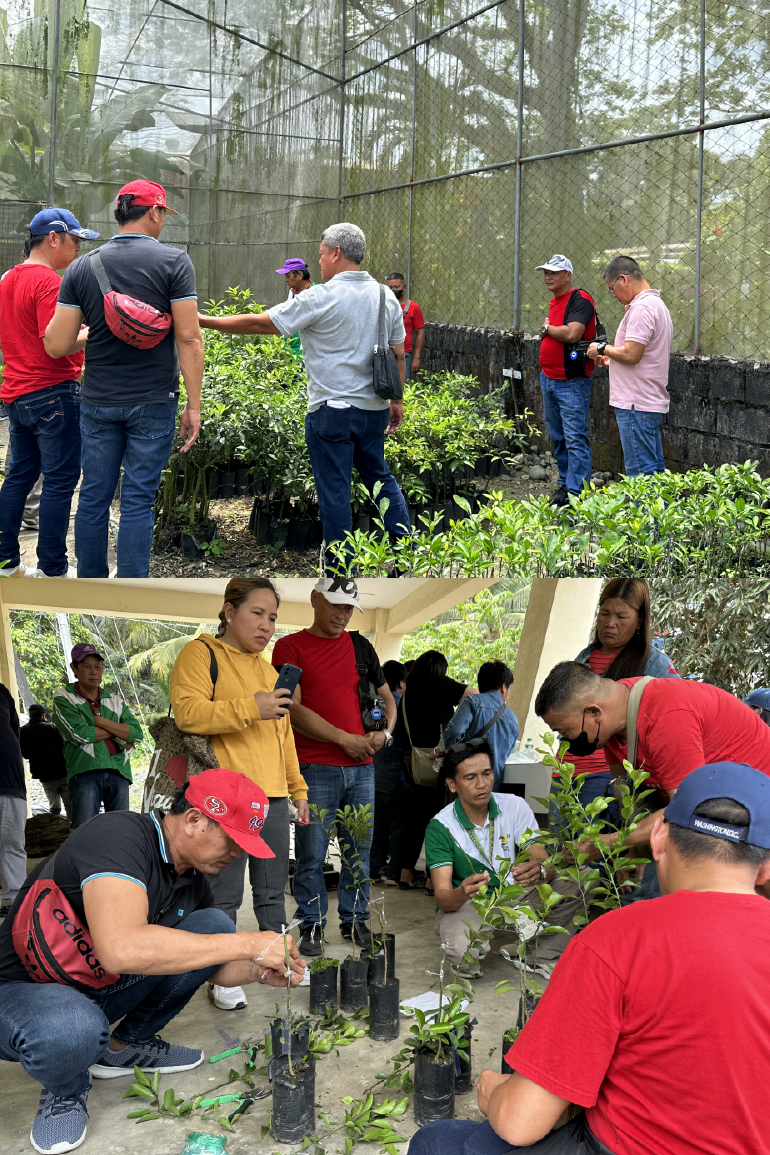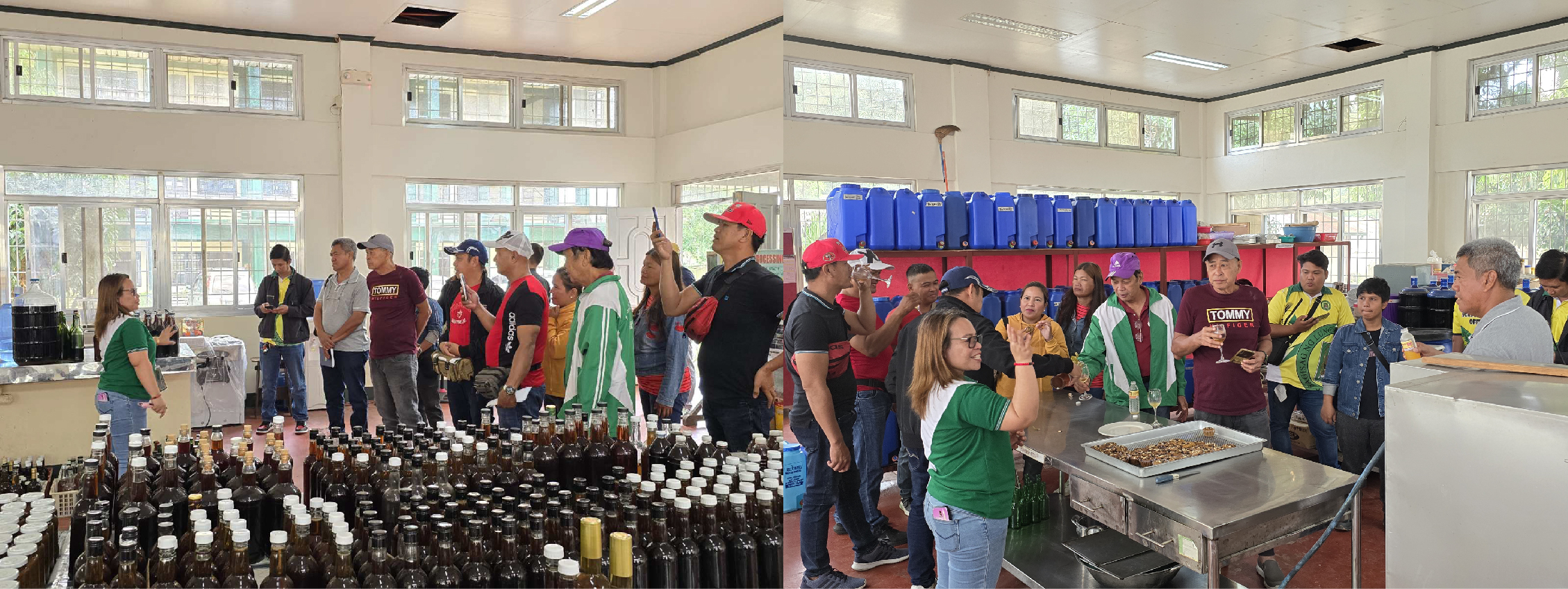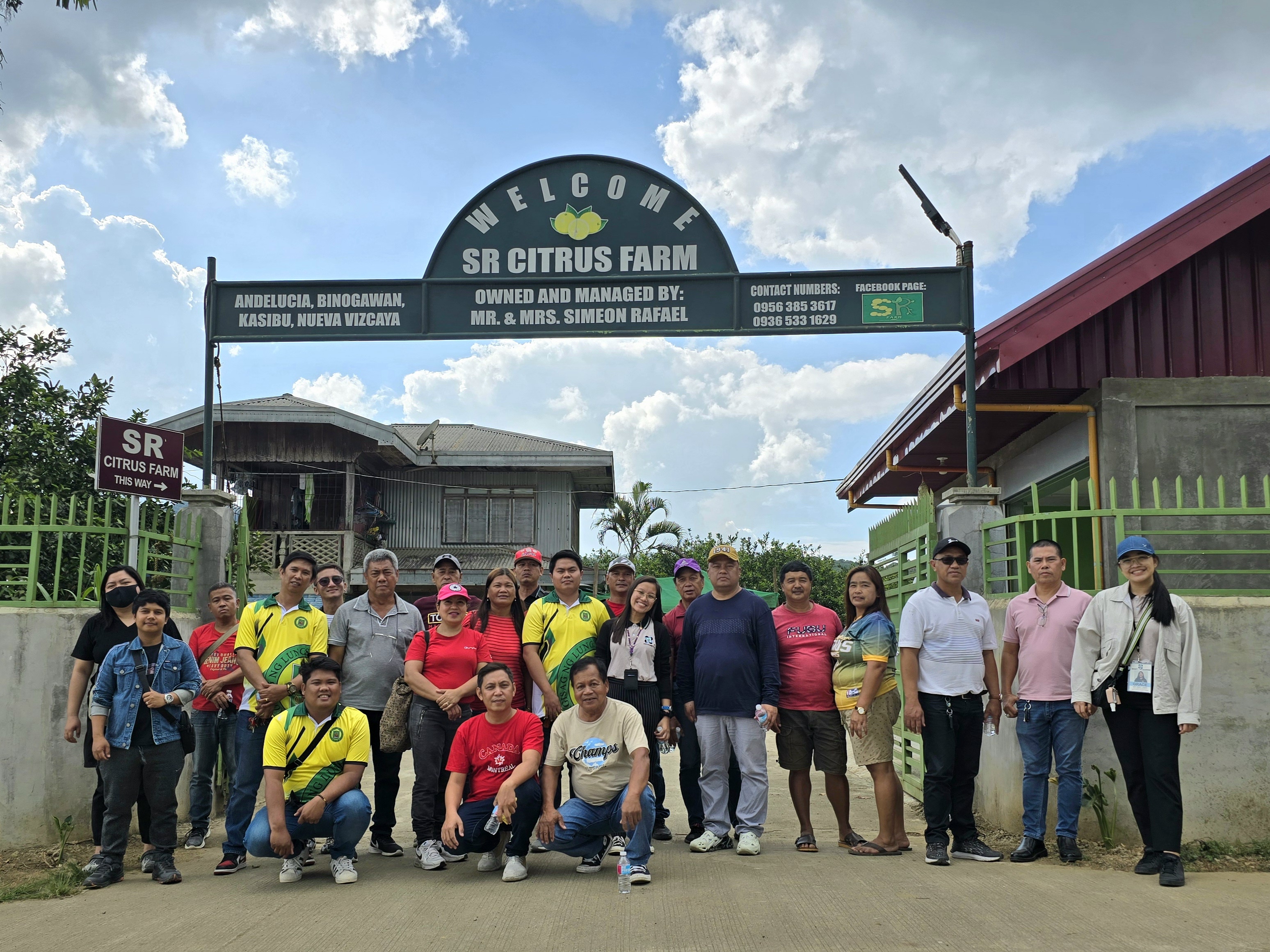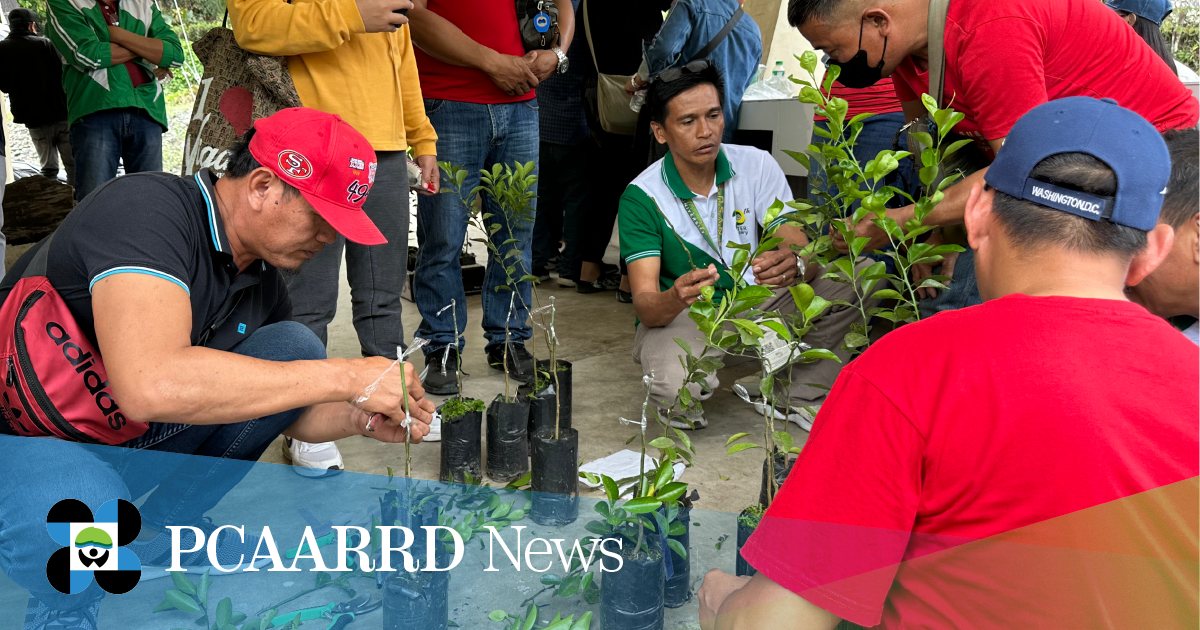
Calamansi farmers at the citrus nursery of NVSU and performed actual grafting and budding for calamansi. (Image credit: SERD, DOST-PCAARRD)
The Philippine Council for Agriculture, Aquatic and Natural Resources Research and Development of the Department of Science and Technology (DOST-PCAARRD), through the Agri-Aqua Business Hub (AABH), led a benchmarking activity at the Nueva Vizcaya State University's (NVSU) citrus production and processing facilities on March 20, 2024.
Aiming to explore best practices and innovations in citrus production and processing, the activity brought together calamansi farmer-groups from Cabanatuan City in Nueva Ecija and representatives from the Cabanatuan City Agricultural Office (CAO). It also hoped to broaden the farmers' knowledge, especially on the proper establishment of a calamansi nursery and the development of other citrus products.
This activity is vital for the farmers to have a benchmark for developing a robust production system that would allow them to produce quality calamansi that would satisfy the demand of institutional buyers.
Moreover, the visit served as an off-shoot activity of the recently conducted training, “Optimizing Calamansi Production for Institutional Market Linkaging: Insights into Standard and Sustainable Cultural Management.”
Citrus Expert and NVSU Vice President for Research, Extension, and Training Services, Dr. Jonar Yago led the tour to the NVSU laboratories and Food Processing, Incubation and Training Center (FPITC) building, which is a Shared Service Facility (SSF) of the Department of Trade and Industry (DTI) in cooperation with NVSU.

Calamansi farmers visited the shared processing facility of NVSU for citrus products. (Image credit: SERD, DOST-PCAARRD)
Dr. Teresita B. Barangay, the focal staff managing the facility, showcased various citrus processing equipment and tools, as well as different products developed such as citrus wine, mandarin juice, citrus cider, and cupcakes. Meanwhile, Project Technical Assistant Dominic Cardoniga and Career Incentive Program Fellow Kenneth Rivera of the Citrus Laboratory discussed some of the university’s ongoing initiatives on pest identification, detection, and mitigation technologies, highlighting that pest infestation is a major challenge in the citrus industry. Mr. Cardonica also added that determining the presence of pests is crucial in developing biocontrol agents that would address infestation problems.
The farmers visited NVSU’s citrus nursery to observe the different citrus commodities, including varieties of calamansi.

NVSU nursery staff demonstrated proper grafting and budding techniques for calamansi. These were also practiced by the farmers for the establishment of their nurseries in Cabanatuan.
Additionally, the farmers also visited mandarin/satsuma farms in Kasibu, Nueva Vizcaya, showcasing a plantation with proper cultural and production practices. Dr. Yago and SR Citrus Farm owner, Simeon Rafael, provided insights about their effective management practices.
Capping the activity, cooperative leaders expressed their utmost gratitude to DOST-PCAARRD AABH and NVSU. With newfound motivation through the benchmarking activity, farmers and cooperative leaders are ready to revitalize the calamansi industry in Nueva Ecija through proper production and cultural management strategies.

